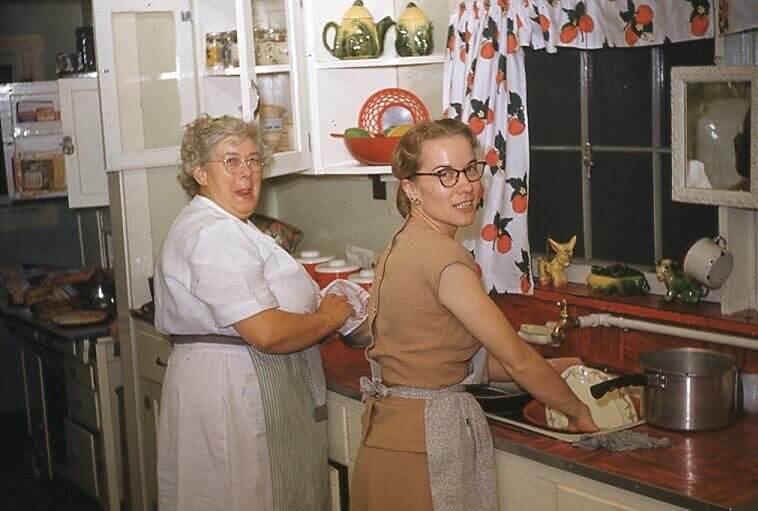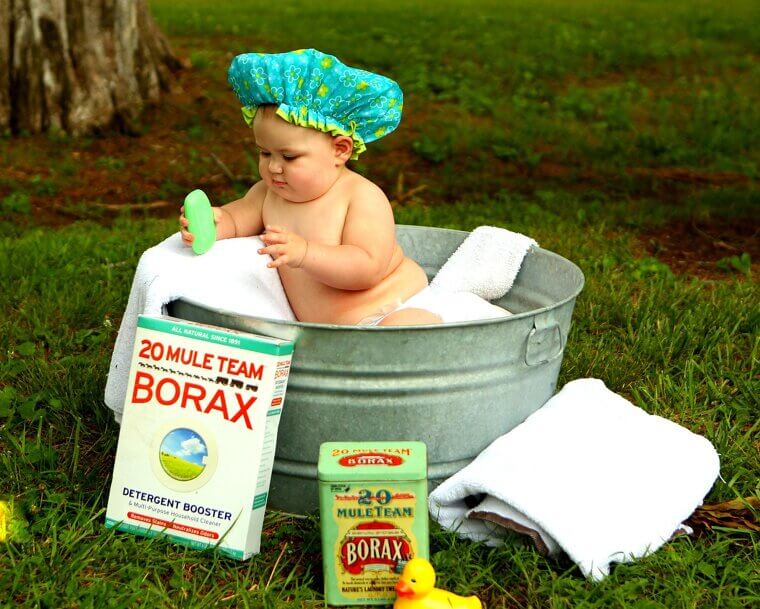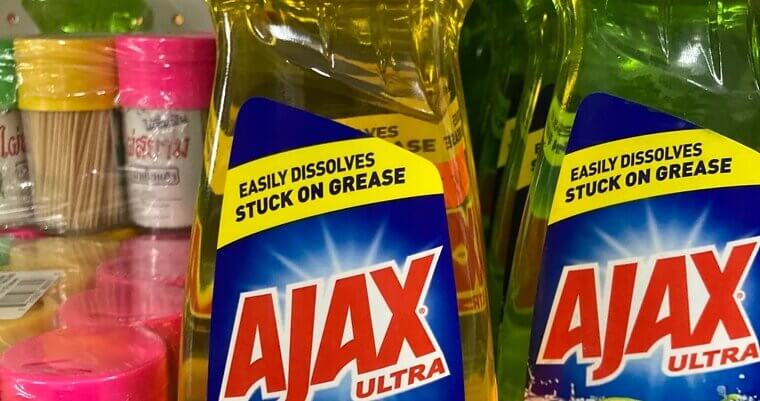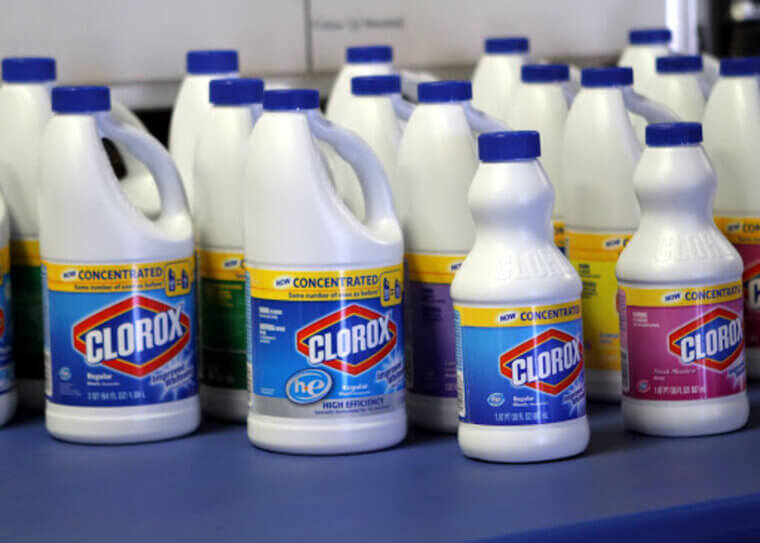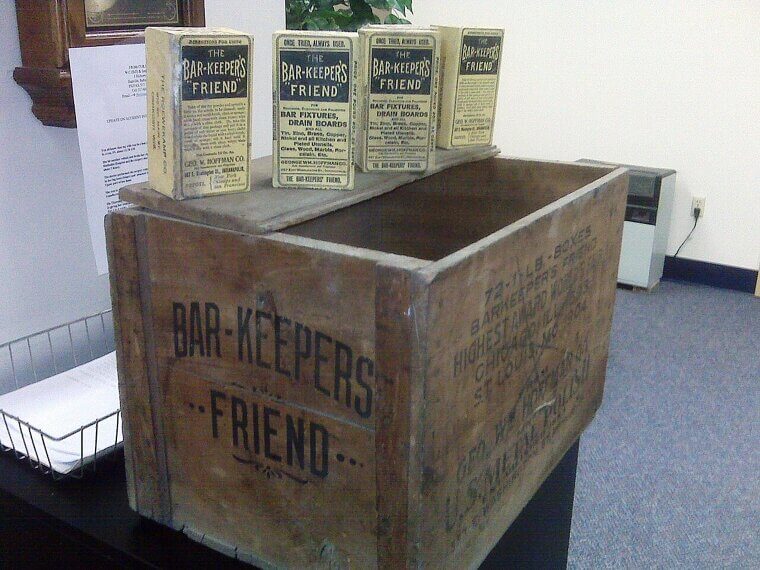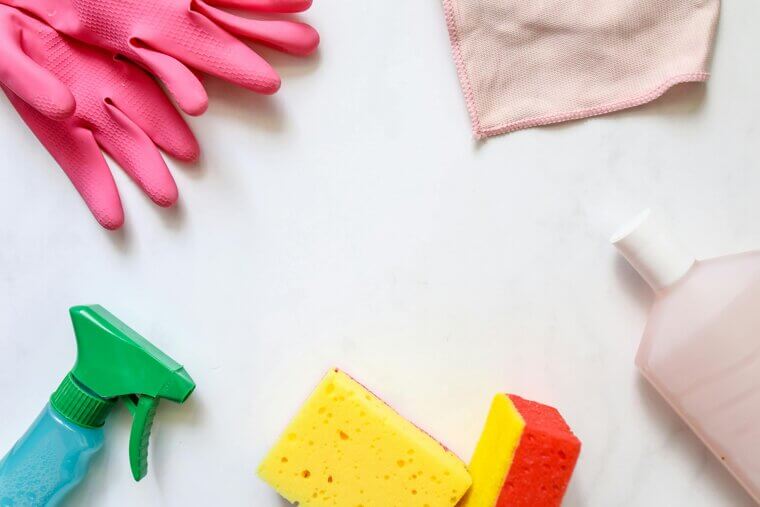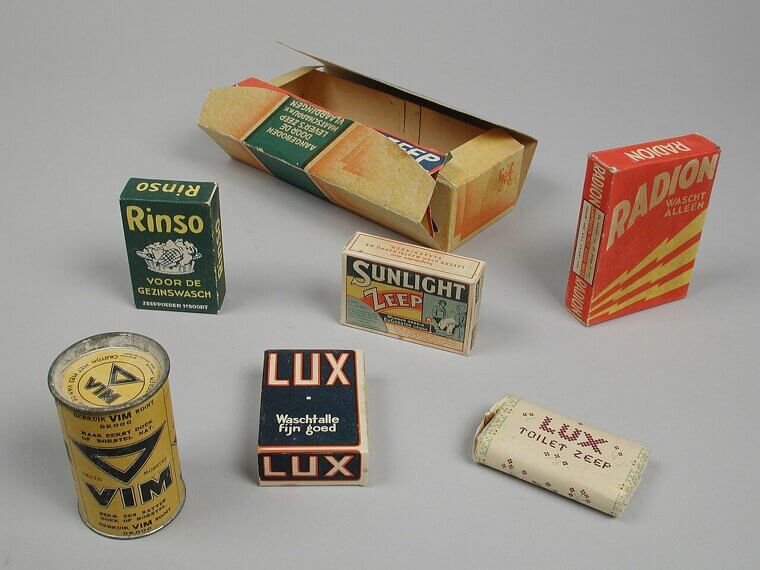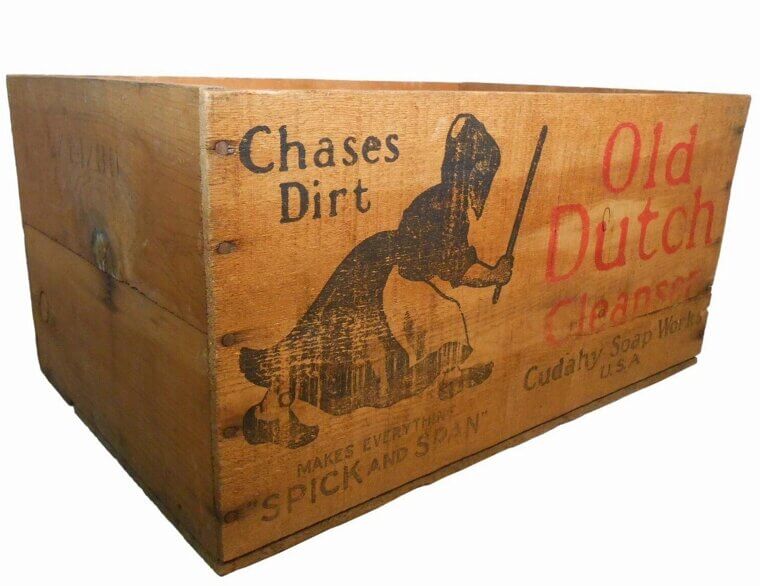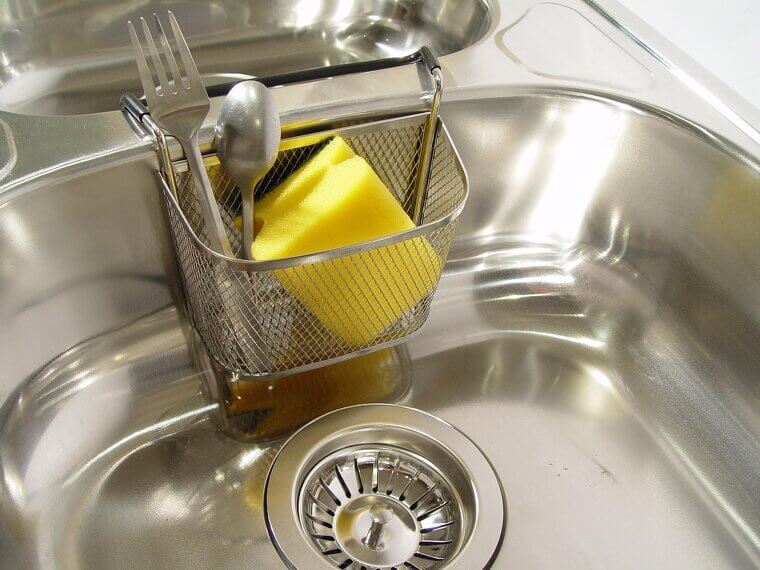Ivory
The soap brand Ivory, as we know it, actually began in 1879, when the son of Procter & Gamble co-founder James Gamble created a fairly inexpensive white soap. His inspiration for the name actually came from Psalm 45 of the Bible: "All thy garments smell of myrrh and aloes and cassia out of the ivory palaces". Ivory was actually whipped with air during the original production process, which allowed the soap to float on water, but this practice was discontinued in 2023.
20 Mule Team Borax
First introduced in 1891, this product is named after the 20-mule teams that first transported borax (the mineral) out of Death Valley in the 1880s. Described as a laundry booster, this product is also used as a household cleaner and an insecticide. The primary ingredient is, of course, borax (sodium borate). Current ownership of 20 Mule Team Borax is held by The Dial Corporation, a subsidiary of the multinational company Henkel.
Rinso
This laundry detergent actually began life under the name of Hudson’s Soap. Robert Spear Hudson originally created this detergent, which was later sold to the Lever Brothers company. As one of the first mass-marketed laundry detergents, Rinso experienced immense popularity in America until rival product Tide came onto the market. Despite its previous success, Rinso slowly faded away due to this competition. In an interesting twist, however, the 99 Cents Only Stores company purchased rights to the Rinso name in 1992, and proceeded to use it on their own line of cleaning products up until they went out of business in 2024 due to financial difficulties. Currently, the original Rinso (owned by Unilever) is still produced for the Turkish, Asian, and Central American markets.
Ajax
First introduced in 1943 as Ajax Powdered Cleanser, the Ajax brand now includes a varied assortment of powerful cleaning products. Ajax is still produced by the same company that first brought it to market, Colgate-Palmolive. While still used by many people today, Ajax was particularly popular during the 1960s and 1970s. Certain Ajax products were, in fact, so well-received that they were considered one of the first serious competitors to the industry leader at the time, Mr. Clean. The original Ajax commercials were also quite memorable, with people today still remembering their “Stronger than dirt!” catchphrase and the shining knight on his white horse that often accompanied it.
Clorox
Known for its signature product, Clorox bleach, the Clorox company actually began life as the Electro-Alkaline Company in 1913 before formally changing its name to Clorox in 1928 when the company went live on the San Francisco stock exchange. Clorox, as a product, didn’t sell well initially because consumers weren't familiar with liquid bleach. Despite this, Clorox steadily increased in popularity thanks to both its usefulness and an effective marketing campaign. Clorox then expanded its product offerings, although the original Clorox bleach remains its most successful product. Today, Clorox bleach is used in many households.
Tide
This laundry detergent has been going strong since its creation in 1946! Made by Procter & Gamble, this laundry detergent is currently one of the highest-selling detergent brands in the world. The development of Tide as a heavy-duty detergent was so significant that in 2006, it was designated an ACS National Historic Chemical Landmark. Believe it or not, however, Tide was originally marketed for both laundry and dishes! This didn’t change until the 1950s, when Procter & Gamble released Cascade (which is specifically a dishwashing detergent).
Bar Keeper's Friend
Bar Keeper’s Friend began life as scouring powder in 1882, and has remained a highly popular cleaning product ever since. The original formulation for Bar Keeper’s Friend, invented by chemist George William Hoffman, is still used in its manufacturing today. In the 1950s, the brand expanded to include other cleaning products under the management of SerVaas Laboratories. Bar Keeper’s Friend has many uses, including (but not limited to) removing rust and stains, as well as helping make stainless steel less prone to oxidation.
Pledge
First introduced in 1958, Pledge is made by the family-owned multinational company S.C. Johnson. Pledge is a product that began life as a simple furniture polish. The brand has since expanded to include a wide variety of household cleaning products, such as floor cleaners and antibacterial multi-surface sprays. Pledge is also sold internationally, albeit under different names (such as Blem in Argentina and Pliz in France).
Mr. Clean
First introduced in 1958 by Linwood Burton and currently owned by Procter & Gamble, the Mr. Clean brand is known just as much for its eponymous mascot as for the effectiveness of its cleaning products. The Mr. Clean brand has grown since its inception in the late 50s and now encompasses a wide range of all-purpose cleaning products.
Jubilee
Jubilee is a liquid furniture wax that first rose to popularity in the 1960s. Also known by its full name, Jubilee Kitchen Wax, this product is wildly popular with some people and unheard of for others. Many people say it’s particularly effective for wood, enamel, stainless steel, porcelain, tile, and other hard surfaces. While it's more of a polish than a cleaner, this product leaves your belongings with a nice polished sheen that can help repel dust and grime.
Vim
First launched in 1904 and produced by Lever Brothers (a British manufacturing company that later became Unilever), this household cleaner was an immensely popular scouring powder during its heyday. In the 1960s, Lever Brothers also produced Vim laundry detergent tablets. These tablets gained a fair amount of popularity at the time thanks to their sponsorship of the I Love Lucy show. The Vim brand actually still exists, although primary ownership now belongs to Henkel, a multinational chemical and consumer goods company based in Germany.
Old Dutch Cleanser
Believe it or not, this cleaner was actually first produced by a meatpacking company! Cudahy Packing Company developed Old Dutch Cleanser after the company began researching ways to use animal fat in soap production (as a means of gaining value from a by-product they might otherwise just dispose of). Old Dutch Cleanser was properly introduced to the market in 1905 and steadily grew in popularity until the brand was acquired by Purex in 1955. Old Dutch Cleanser was considered very effective and groundbreaking for its time and still exists today as various laundry, bleach, and dishwashing products.
Drano
Drano first came onto the scene as a chemical drain cleaner in 1923. S.C. Johnson currently produces Drano, but the original owner (and inventor) of this product was Harry Drackett of the Drackett Company. He created Drano when he realized that the growing popularity of indoor plumbing would require a high-quality drain cleaner. This first version of Drano was a mixture of aluminum pellets and dry lye crystals. Eventually, ownership of the brand changed hands, but Drano has remained one of the most popular products for keeping drains flowing.

